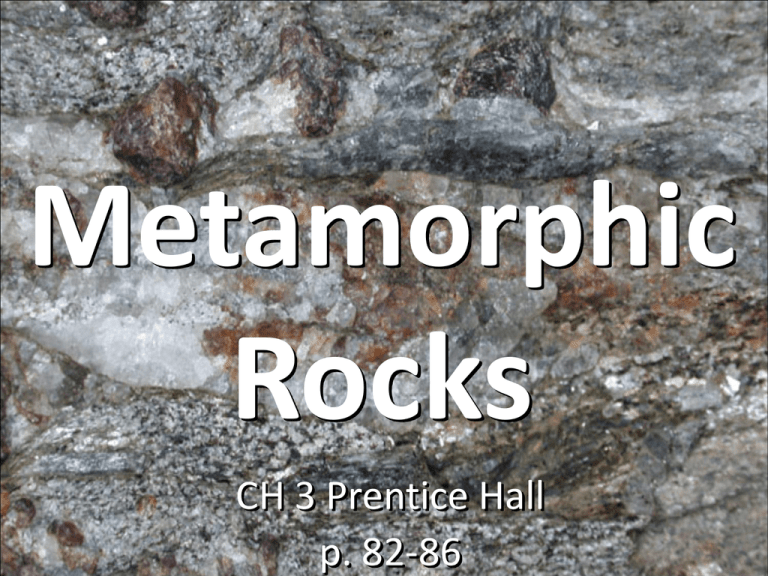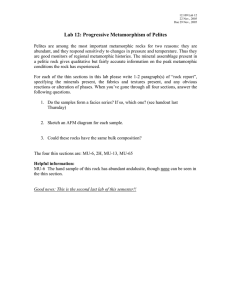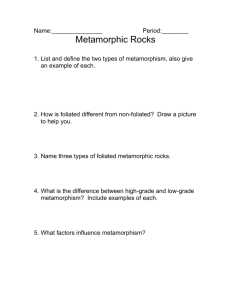Rocks Metamorphic CH 3 Prentice Hall p. 82-86
advertisement

Metamorphic Rocks CH 3 Prentice Hall p. 82-86 Formation of Metamorphic Rocks • Heat and Pressure deep beneath Earth’s surface can change any rock (ig, sed or met) into metamorphic rock. • Forces inside Earth push rock down towards the heat of the Mantle. Formation of Metamorphic Rocks • Pockets of magma can also provide heat. • Pressure is due to the weight of the overlying rock. (Deeper=greater pressure) Classifying (Parent Rocks) Foliated Non-Foliated Parent Rock Metamorphic Rock Parent Rock Metamorphic Rock Granite Gneiss Limestone Marble Shale Slate Sandstone Quartzite Classifying Metamorphic Rocks Foliated • Thin flat layering rock • Grains arranged in parallel layers or bands. • May split along the bands or layers. Non-Foliated • Mineral grains are arranged randomly. • Do not split into layers. Uses of Metamorphic Rocks Marble • Fine even grain, easy to cut into slabs • Easily polished. • Used for buildings and statues. (Taj Mahal) Slate • Easily splits into flat pieces. • Flooring roofing, walkways, chalkboards • Comes in a variety of colors • Used for trim on buildings






